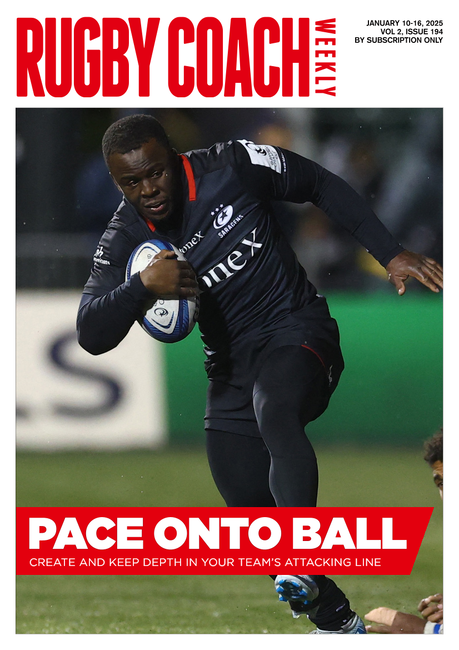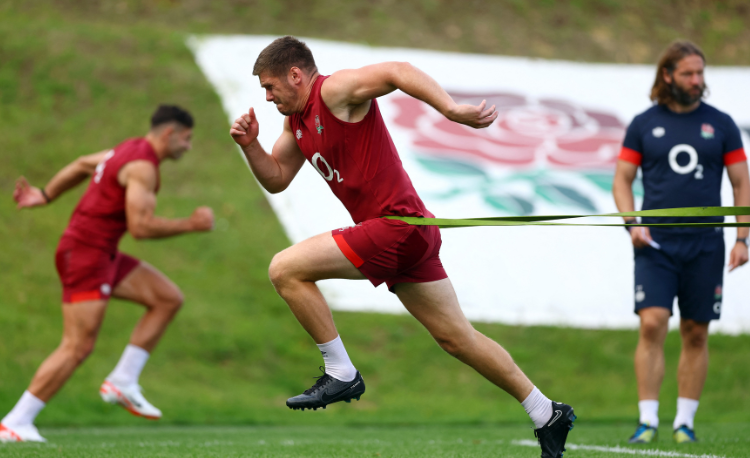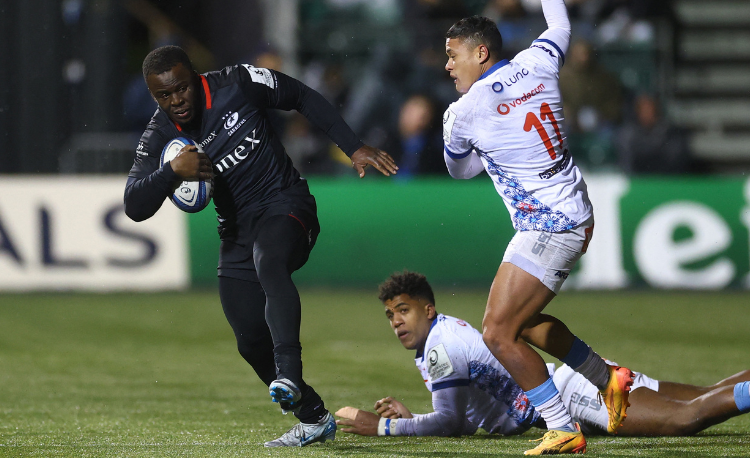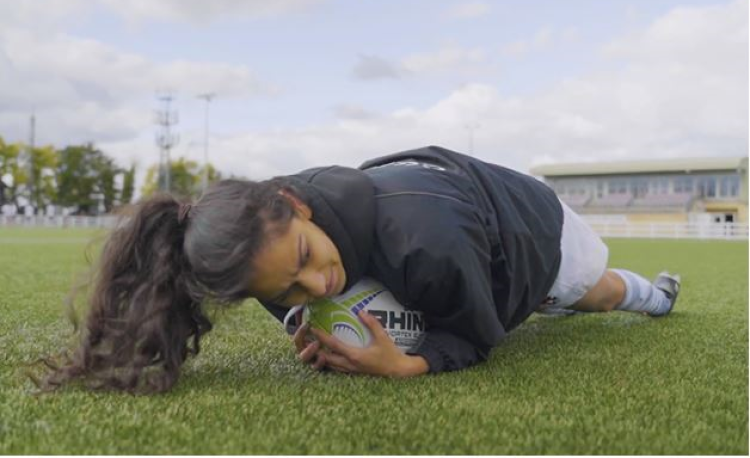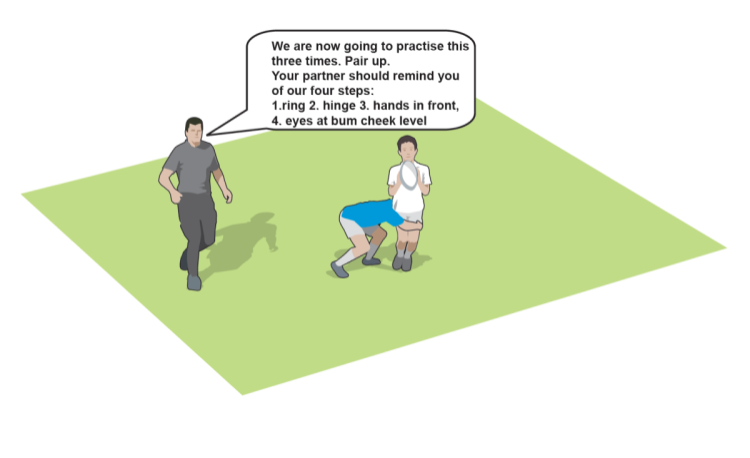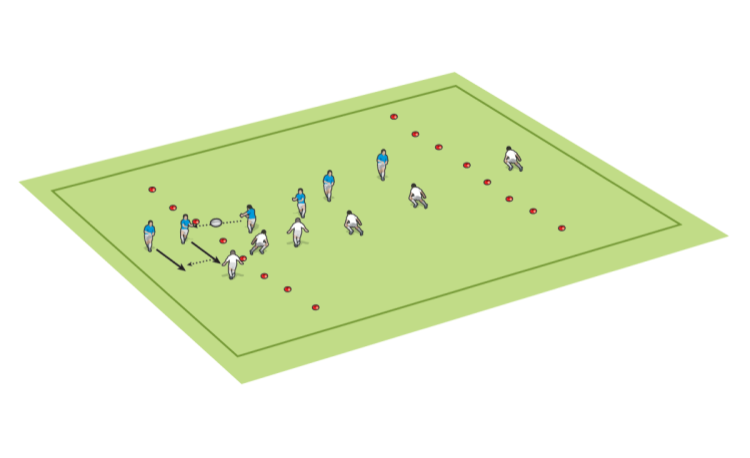7 ways to make better demos

Demonstrating a technique is a powerful coaching tool. Use our seven-point guide to make these demonstrations quick and straightforward.
1. SELL BEFORE YOU START
Sell the idea to the players before the demonstration begins. Ask players for solutions to a problem or areas for improvement. Create a need.
2. PAINT A PICTURE BEFORE YOU DEMONSTRATE
Outline what body parts will be key to the technique and how they might feel during the demonstration. Main areas that players focus on are:
- Head position
- Eyes
- Shoulders
- Elbows
- Hands
- Hips
- Knees
- Feet
Pick out two to focus on.
3. DEMONSTRATE IN THE RIGHT PLACE
You are almost ready to start the demonstration so ensure...
Everyone can see
Arrange the players in a horseshoe, but not a circle.
Everyone can focus
There are no distractions behind you like other players training or the sun.
Everyone is ready
Look at their eyes and body language, and listen for silence.
4. DEMONSTRATE IN SLOW MOTION
 You should demonstrate at half pace if possible. Players need to see where you are moving or what you are doing. They will be copying you. But since you are demonstrating, it is something they may not have done before. Therefore, you will want them to do it slowly or at least deliberately before increasing the intensity.
You should demonstrate at half pace if possible. Players need to see where you are moving or what you are doing. They will be copying you. But since you are demonstrating, it is something they may not have done before. Therefore, you will want them to do it slowly or at least deliberately before increasing the intensity.
5. DEMONSTRATE WHAT YOU CAN DO
A poor demonstration can mean a lack of trust and bad outcomes when players try it themselves. You must have practised your demonstration before training.
If you cannot demonstrate it, you need to use another technique, which is peer demonstration. Get a player or players to demonstrate with you feeding back after they have completed the demonstration.
6. DON'T TALK, DO AND DO AGAIN
Do the demonstration without commentary. Then you can repeat it, perhaps with commentary this time. But let players see the flow, action or body shapes. If you are moving and talking, it can reduce the effectiveness of the demonstration.
7. CHECK FOR UNDERSTANDING
You can, at this stage, do two things: Let another player or players repeat what you have done, or let them try it out.
But don’t finish the demonstrations with the words: “Any questions?” Either ask for direct feedback (and let another player repeat) or let them have a go.
Avoid tackling or full-speed contact when you are doing a demonstration. If you need to show those skills, use only experienced players. If you are using other players in your demonstration, speak to them clearly and directly about their roles.
DO YOU NEED TO DEMONSTRATE EVERY SKILL?
Not every skill needs demonstrating. Demonstrations can be counterproductive if there are too many in a session.
Stick to two at most during training. If a player struggles with a specific area, you should find time to work with them at another time.
Also, with younger players, be wary that you have vastly different skills from theirs. What might seem simple to you might be far more difficult for them because they might not have the core strength or hand-eye coordination you have. Catch-and-pass especially needs sympathy.
Related Files
Newsletter Sign Up
Coaches Testimonials

Gerald Kearney, Downtown Las Vegas Soccer Club

Paul Butler, Florida, USA

Rick Shields, Springboro, USA

Tony Green, Pierrefonds Titans, Quebec, Canada
Subscribe Today
Be a more effective, more successful rugby coach
In a recent survey 89% of subscribers said Rugby Coach Weekly makes them more confident, 91% said Rugby Coach Weekly makes them a more effective coach and 93% said Rugby Coach Weekly makes them more inspired.
Get Weekly Inspiration
All the latest techniques and approaches
Rugby Coach Weekly offers proven and easy to use rugby drills, coaching sessions, practice plans, small-sided games, warm-ups, training tips and advice.
We've been at the cutting edge of rugby coaching since we launched in 2005, creating resources for the grassroots youth coach, following best practice from around the world and insights from the professional game.


